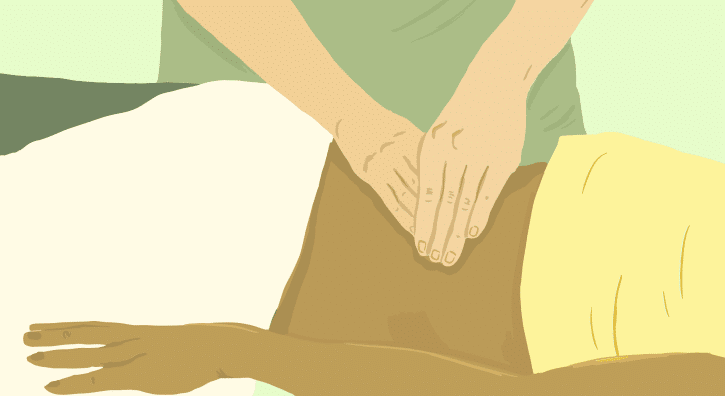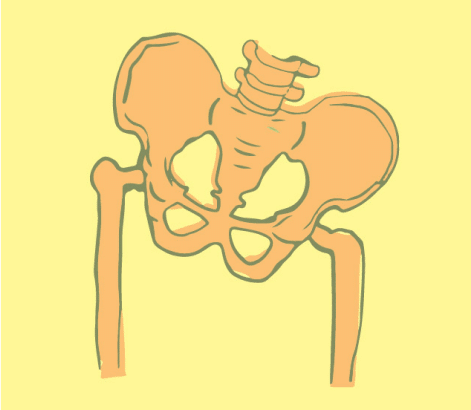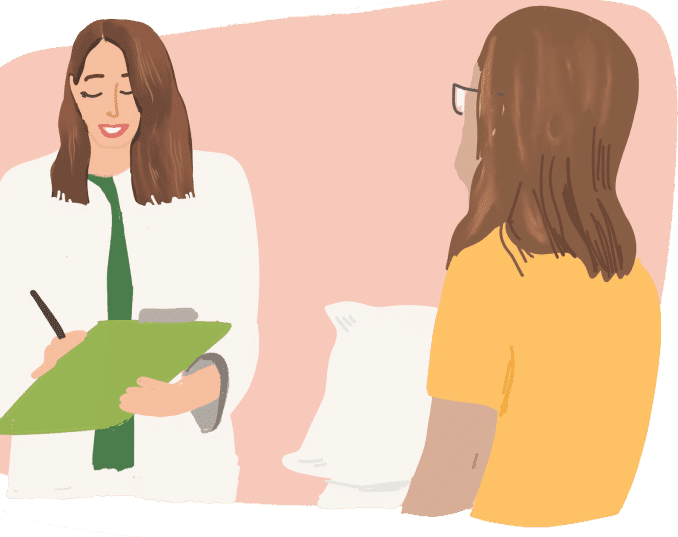

Issues like reduced sexual interest, difficulty becoming aroused, challenges with orgasm, or pain during sex can leave individuals feeling confused and alone. Yet one frequently overlooked contributor to sexual dysfunction is the pelvic floor. These muscles play a central role in sexual activity—supporting erections in men and creating the involuntary contractions that contribute to orgasm for everyone. When the pelvic floor muscles are functioning well, they add to sexual enjoyment. But if they become too tense, weak, or out of sync, they may instead create sensations of pain, diminished sensitivity, or lack of satisfaction. This can affect not only the physical experience of sex but also emotional health and relationship closeness. Thankfully, pelvic floor physical and occupational therapy provides an evidence-based and highly effective avenue for addressing these issues, empowering individuals to regain function and rediscover a satisfying intimate life.
The Facts
- Painful sex affects up to one-third of premenopausal women, though cultural taboos and lack of awareness often prevent open conversations and treatment.
- Between 15% and 72% of younger men—those under age 40—experience erectile dysfunction, dispelling the myth that it’s only an issue for older adults.
- For men aged 40 to 70, approximately 52% report some level of erectile difficulty, which can impact both their quality of life and relationship satisfaction.
- After prostate surgery, up to 80% of men experience reduced erectile function, highlighting a significant yet often unspoken post-surgical concern.
- Nearly 60% of women navigating menopause say they’ve been too embarrassed to tell their doctors about painful sex, allowing symptoms to persist untreated.
- Common medications like birth control pills and acne treatments can reduce natural moisture and cause discomfort, affecting overall sexual experience.
- Pain during sex lingers for around 65% of postpartum women, with some reporting symptoms that last well over a year after giving birth.
Issues like reduced sexual interest, difficulty becoming aroused, challenges with orgasm, or pain during sex can leave individuals feeling confused and alone. Yet one frequently overlooked contributor to sexual dysfunction is the pelvic floor. These muscles play a central role in sexual activity—supporting erections in men and creating the involuntary contractions that contribute to orgasm for everyone. When the pelvic floor muscles are functioning well, they add to sexual enjoyment. But if they become too tense, weak, or out of sync, they may instead create sensations of pain, diminished sensitivity, or lack of satisfaction. This can affect not only the physical experience of sex but also emotional health and relationship closeness. Thankfully, pelvic floor physical and occupational therapy provides an evidence-based and highly effective avenue for addressing these issues, empowering individuals to regain function and rediscover a satisfying intimate life.
The Facts
- Painful sex affects up to one-third of premenopausal women, though cultural taboos and lack of awareness often prevent open conversations and treatment.
- Between 15% and 72% of younger men—those under age 40—experience erectile dysfunction, dispelling the myth that it’s only an issue for older adults.
- For men aged 40 to 70, approximately 52% report some level of erectile difficulty, which can impact both their quality of life and relationship satisfaction.
- After prostate surgery, up to 80% of men experience reduced erectile function, highlighting a significant yet often unspoken post-surgical concern.
- Nearly 60% of women navigating menopause say they’ve been too embarrassed to tell their doctors about painful sex, allowing symptoms to persist untreated.
- Common medications like birth control pills and acne treatments can reduce natural moisture and cause discomfort, affecting overall sexual experience.
- Pain during sex lingers for around 65% of postpartum women, with some reporting symptoms that last well over a year after giving birth.
Symptoms
*Sexual Dysfunction in people with a penis
- Symptoms of erectile dysfunction may include difficulty achieving firmness, losing erection mid-activity, or premature ejaculation.
- A weak or absent ejaculatory response can be distressing and unexpected.
- Urine leakage at the point of orgasm is known as climacturia and may signal muscle or nerve issues.
- Some men report pain following ejaculation, localized in the groin, testicles, or undercarriage.
- Discoloration or unusual skin markings may also present in the genital or perineal area.
Postpartum Sexual Dysfunction
- Breastfeeding shifts hormone balance, reducing natural lubrication.
- Tears and cuts from delivery may cause ongoing sensitivity or pain in the perineum.
- Orgasmic difficulty can emerge or worsen post-childbirth.
- Many new mothers find themselves leaking urine during or after intimacy.
- Sexual discomfort often continues well beyond the “healing” period.
*Sexual Dysfunction in people with vulvas/vaginas
- Arousal without sufficient moisture leads to friction and discomfort during intimacy.
- Penetration pain can occur at any point—on entry, mid-activity, or from start to finish.
- For some, clitoral touch causes pain instead of heightened sensation.
- Burning or soreness post-intimacy can make future attempts anxiety-inducing.
- Climaxes may feel less intense or go missing altogether.
- Accidental urination during intercourse may reflect a lack of muscular control.
- Leakage during orgasm is climacturia and often requires pelvic assessment.
Menopausal Sexual Dysfunction and Post-gynecologic cancer treatment
- Menopause reduces lubrication and causes thinning of vaginal tissue.
- Penetration becomes more challenging and often painful.
- Pain can persist for hours following sexual activity.
- Climax response may weaken or vanish due to treatment or hormonal changes.
Symptoms
*Sexual Dysfunction in people with a penis
- Symptoms of erectile dysfunction may include difficulty achieving firmness, losing erection mid-activity, or premature ejaculation.
- A weak or absent ejaculatory response can be distressing and unexpected.
- Urine leakage at the point of orgasm is known as climacturia and may signal muscle or nerve issues.
- Some men report pain following ejaculation, localized in the groin, testicles, or undercarriage.
- Discoloration or unusual skin markings may also present in the genital or perineal area.
*Sexual Dysfunction in people with vulvas/vaginas
- Arousal without sufficient moisture leads to friction and discomfort during intimacy.
- Penetration pain can occur at any point—on entry, mid-activity, or from start to finish.
- For some, clitoral touch causes pain instead of heightened sensation.
- Burning or soreness post-intimacy can make future attempts anxiety-inducing.
- Climaxes may feel less intense or go missing altogether.
- Accidental urination during intercourse may reflect a lack of muscular control.
- Leakage during orgasm is climacturia and often requires pelvic assessment.
Postpartum Sexual Dysfunction
- Breastfeeding shifts hormone balance, reducing natural lubrication.
- Tears and cuts from delivery may cause ongoing sensitivity or pain in the perineum.
- Orgasmic difficulty can emerge or worsen post-childbirth.
- Many new mothers find themselves leaking urine during or after intimacy.
- Sexual discomfort often continues well beyond the “healing” period.
Menopausal Sexual Dysfunction and Post-gynecologic cancer treatment
- Menopause reduces lubrication and causes thinning of vaginal tissue.
- Penetration becomes more challenging and often painful.
- Pain can persist for hours following sexual activity.
- Climax response may weaken or vanish due to treatment or hormonal changes.
Associated Diagnoses
Diagnoses such as Endometriosis, Vulvodynia, Interstitial Cystitis/Painful Bladder Syndrome, Pudendal Neuralgia, Chronic Pelvic Pain Syndrome/Male Pelvic Pain, Lichen Sclerosus, Lichen Planus, Pelvic Floor Dysfunction, post-prostatectomy complications, and Genitourinary Syndrome of Menopause are all associated with sexual dysfunction and pelvic pain.

Associated Diagnoses
Diagnoses such as Endometriosis, Vulvodynia, Interstitial Cystitis/Painful Bladder Syndrome, Pudendal Neuralgia, Chronic Pelvic Pain Syndrome/Male Pelvic Pain, Lichen Sclerosus, Lichen Planus, Pelvic Floor Dysfunction, post-prostatectomy complications, and Genitourinary Syndrome of Menopause are all associated with sexual dysfunction and pelvic pain.


Causes of Sexual Dysfunction
- Pelvic pain syndromes associated with pelvic floor dysfunction (above)
- Childbirth
- Medications
- Obesity
- Cardiovascular disease
- Menopause
- Jelqing
- Genital mutilation, genital cutting
- Surgically-induced
- Pelvic Floor Reconstruction
- Prostatectomy
- Gender affirming surgery
- Episiotomy
- Vestibulectomy
- Pudendal Nerve Decompression
- Mesh excision
Causes of Sexual Dysfunction
- Pelvic pain syndromes associated with pelvic floor dysfunction (above)
- Childbirth
- Medications
- Obesity
- Cardiovascular disease
- Menopause
- Jelqing
- Genital mutilation, genital cutting
- Surgically-induced
- Pelvic Floor Reconstruction
- Prostatectomy
- Gender affirming surgery
- Episiotomy
- Vestibulectomy
- Pudendal Nerve Decompression
- Mesh excision

Diagnostic Challenges
Sexual health is an essential part of a person’s well-being, yet it is one of the most neglected areas in clinical care. Medical providers are often not given the training necessary to navigate these conversations effectively, and patients, fearing shame or dismissal, frequently choose to remain silent. This gap in communication is particularly harmful to LGBTQ+ individuals, who already face disproportionate challenges in accessing inclusive healthcare. At PHRC, we are working to shift this paradigm. Our approach centers on empathy, respect, and evidence-based treatment. We provide a safe, welcoming environment where all patients can talk about their sexual concerns without fear of stigma. Recognizing that sexual dysfunction often has both physical and emotional dimensions, our team integrates pelvic floor therapy with mental health and medical care. By addressing the complete picture, we aim to restore not just function, but confidence, pleasure, and a sense of agency in every patient’s journey toward wellness.
Diagnostic Challenges
Sexual health is an essential part of a person’s well-being, yet it is one of the most neglected areas in clinical care. Medical providers are often not given the training necessary to navigate these conversations effectively, and patients, fearing shame or dismissal, frequently choose to remain silent. This gap in communication is particularly harmful to LGBTQ+ individuals, who already face disproportionate challenges in accessing inclusive healthcare. At PHRC, we are working to shift this paradigm. Our approach centers on empathy, respect, and evidence-based treatment. We provide a safe, welcoming environment where all patients can talk about their sexual concerns without fear of stigma. Recognizing that sexual dysfunction often has both physical and emotional dimensions, our team integrates pelvic floor therapy with mental health and medical care. By addressing the complete picture, we aim to restore not just function, but confidence, pleasure, and a sense of agency in every patient’s journey toward wellness.
Treatment:
How We Can Help You

Sexual dysfunction can be difficult to talk about, but addressing it head-on with the right support can lead to powerful improvements. In Poway, many individuals have found relief through pelvic floor physical and occupational therapy. If you’re struggling with discomfort, reduced sensation, or performance issues, we encourage you to schedule an initial evaluation. During your first visit, your therapist will take a detailed look at your health background, previous diagnoses, and any treatments you’ve already tried. We’ve worked with many people from Poway who felt their concerns weren’t taken seriously elsewhere, and we strive to offer the validation and expert care they deserve. Your physical exam will include checks for muscle tone, joint function, nerve responsiveness, and posture. Following the assessment, we’ll lay out a personalized therapy schedule—often involving sessions once or twice a week for 12 weeks, plus supportive exercises you can do at home. With your permission, we may also collaborate with other healthcare professionals to enhance your results. Our aim is to help you feel stronger, more confident, and fully supported throughout your journey.

Treatment:
How We Can Help You
Sexual dysfunction can be difficult to talk about, but addressing it head-on with the right support can lead to powerful improvements. In Poway, many individuals have found relief through pelvic floor physical and occupational therapy. If you’re struggling with discomfort, reduced sensation, or performance issues, we encourage you to schedule an initial evaluation. During your first visit, your therapist will take a detailed look at your health background, previous diagnoses, and any treatments you’ve already tried. We’ve worked with many people from Poway who felt their concerns weren’t taken seriously elsewhere, and we strive to offer the validation and expert care they deserve. Your physical exam will include checks for muscle tone, joint function, nerve responsiveness, and posture. Following the assessment, we’ll lay out a personalized therapy schedule—often involving sessions once or twice a week for 12 weeks, plus supportive exercises you can do at home. With your permission, we may also collaborate with other healthcare professionals to enhance your results. Our aim is to help you feel stronger, more confident, and fully supported throughout your journey.
How Can We Help You?
Please use the form below to send us any questions or comments. You must include your e-mail address in order for us to send a response. Please be assured that all of your information will be kept confidential.

Join The Newsletter. Win a copy of our book, “Pelvic Pain Explained!”
We love getting to know our website visitors. Please tell us a little bit about yourself and get the latest info via PHRC e-newsletter!
*Subscribers automatically eligible to win our book, “Pelvic Pain Explained.”
Pelvic Pain Explained offers a realistic, compassionate look at the daily challenges of living with a misunderstood condition. It traces the path many patients take through misdiagnoses, trial-and-error treatments, and emotional fatigue. Clinicians, too, are shown grappling with the limits of current medical knowledge. The book explores the quiet but profound effect pelvic pain can have on emotional health and relationships, giving readers a better understanding of the personal and clinical complexities behind this condition.


